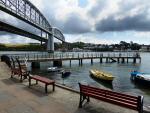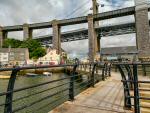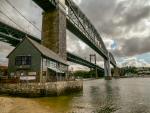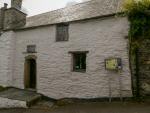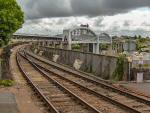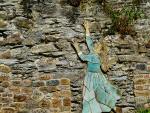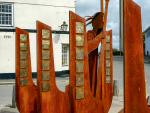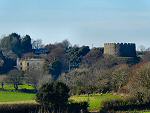Saltash is a town in the south east of Cornwall, facing
Plymouth over the River Tamar. Known as "the Gateway to Cornwall"
because of the rail and road bridges crossing the River Tamar here. Saltash
was founded as a market town by the lord of Trematon Castle in the 12th
century. The town was sited at a point where an ancient highway crossed
the Tamar estuary by means of a ferry. By the end of that century Saltash
had achieved borough status. Its name means ash tree by the salt mill
and it was the first port to be established on the system of estuaries
stretching from Plymouth Sound. It is now a flourishing modern town, set
by the River Tamar in a lovely setting within easy reach of many major
attractions in both Cornwall and Devon.
The more famous of the two bridges here is the rail bridge which was designed
by the famous Victorian engineer Isambard Kingdom Brunel. The Royal Albert
Bridge, Brunel's masterpiece, was opened by HRH Prince Albert on 2 May
1859 to carry the railway line across the River Tamar to Cornwall. A towering
134-foot bridge, it is 2,187.5 feet long, has two unique 455 foot iron
trusses and still carries the main line railway in and out of Cornwall.
Alongside it is the Tamar Bridge, a toll bridge 1,099 ft long, carrying
the A38 trunk road between Devon and Cornwall. It was completed in October
1961 and formally opened by Queen Elizabeth The Queen Mother in April
1962. In 2001 became the first suspension bridge to be widened whilst
remaining open to traffic.
Other visitor attractions include the cottage of Mary Newman, Sir Francis
Drake's first wife; the early Norman church of St Nicholas and St Faith
uphill from the ferry crossing and the main parish church for Saltash;
the 15th century St Stephens which is about a mile from the town centre.
Nearby are the ruins of Trematon Castle; a motte-and-bailey castle dating
from soon after the Norman conquest.
|
